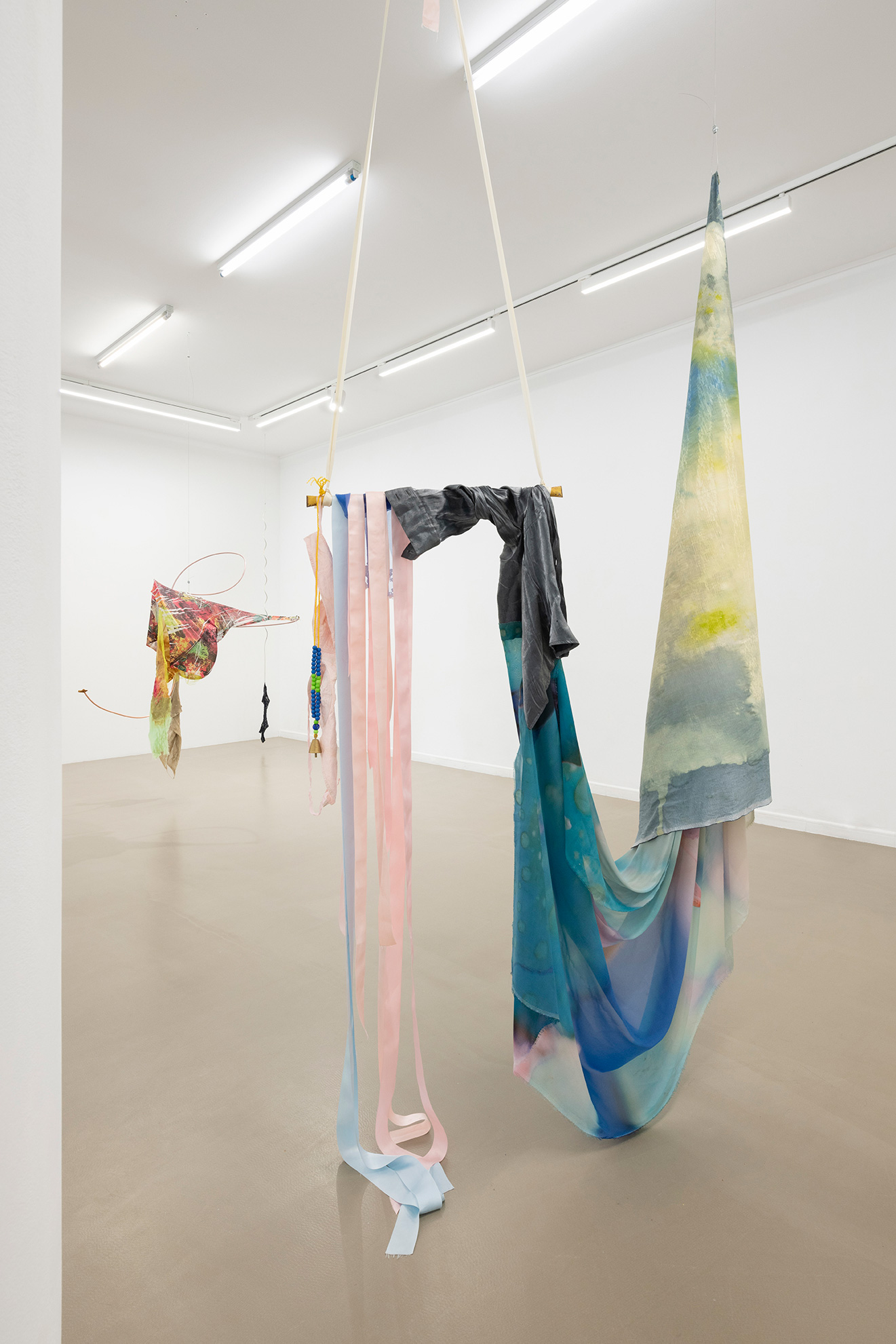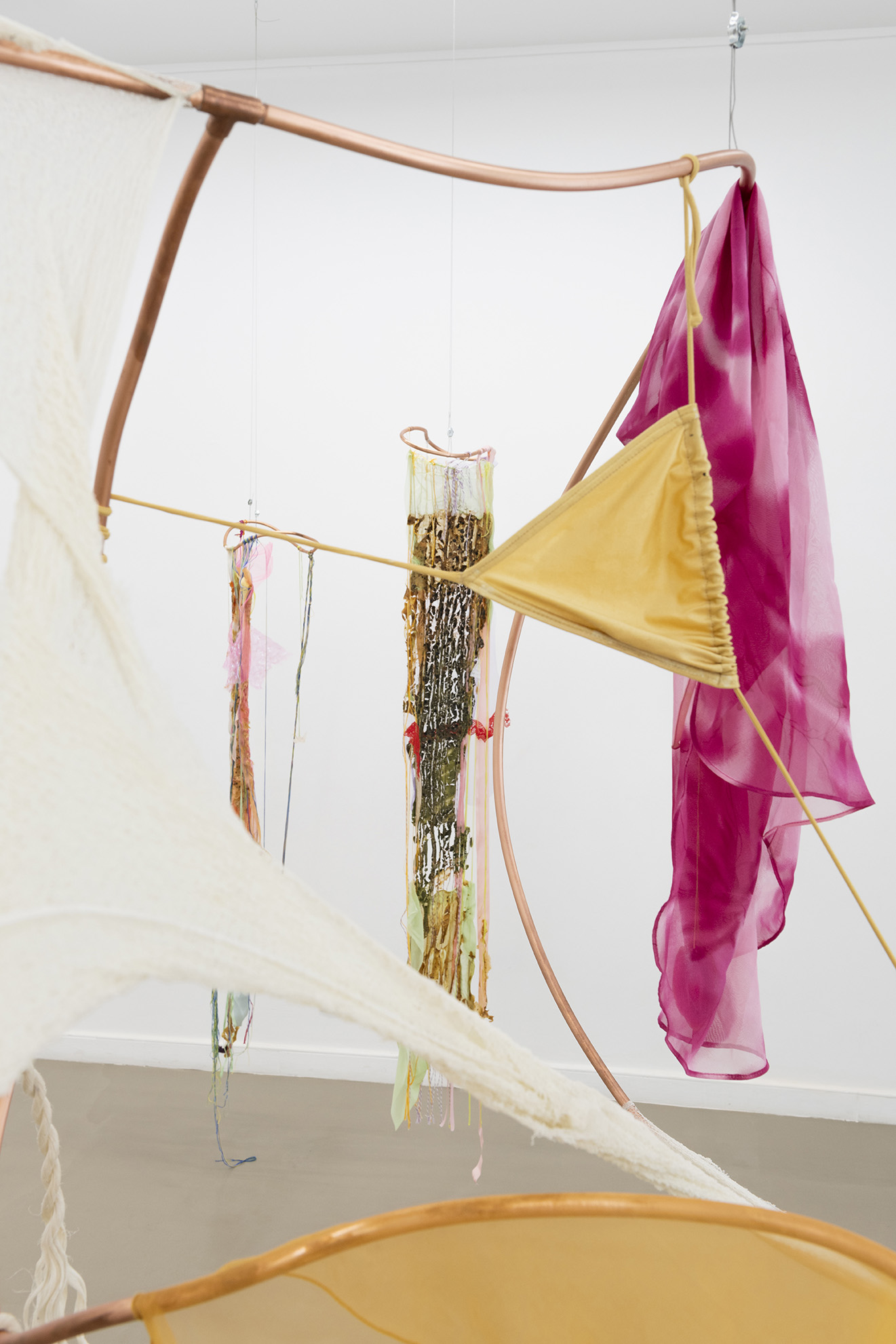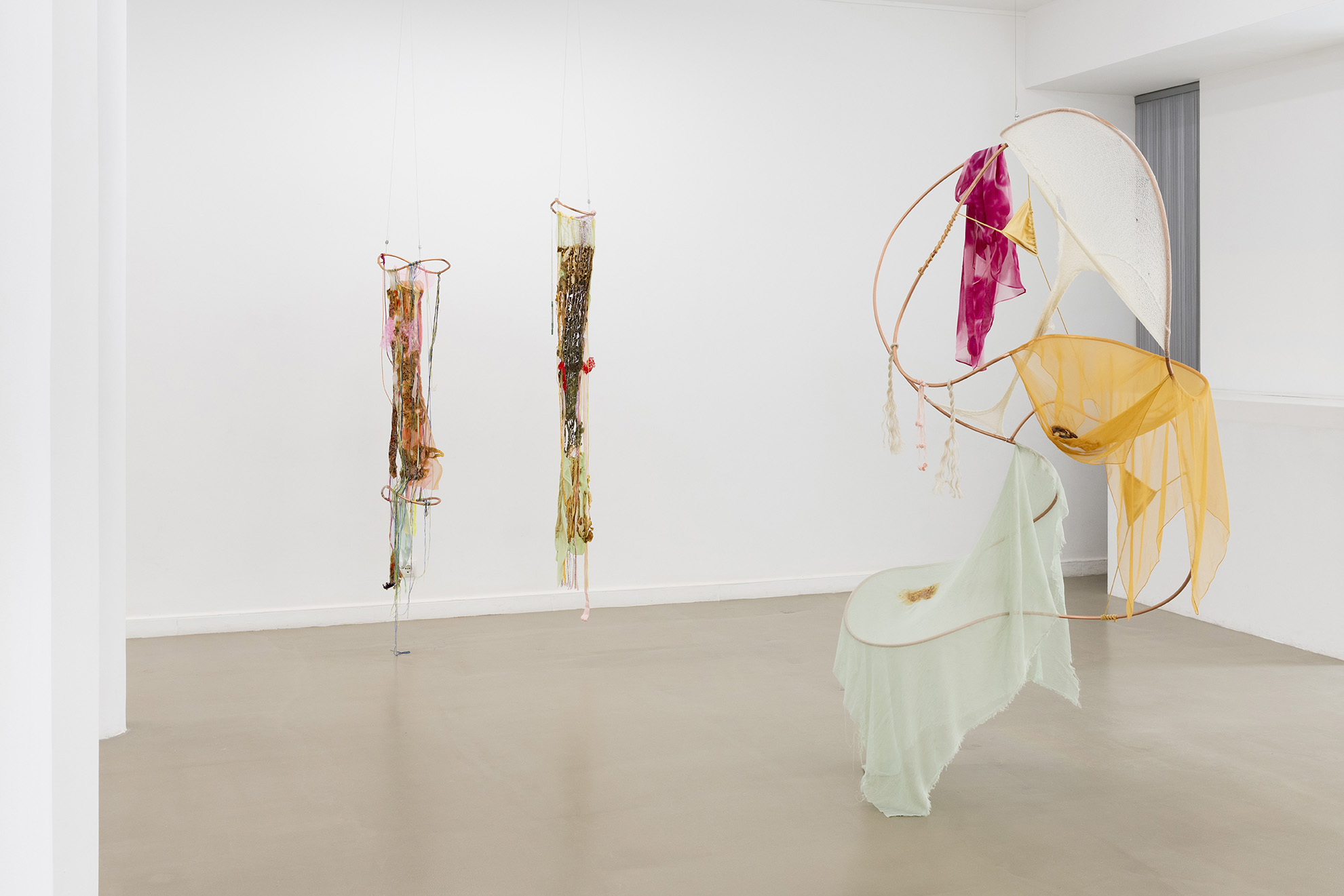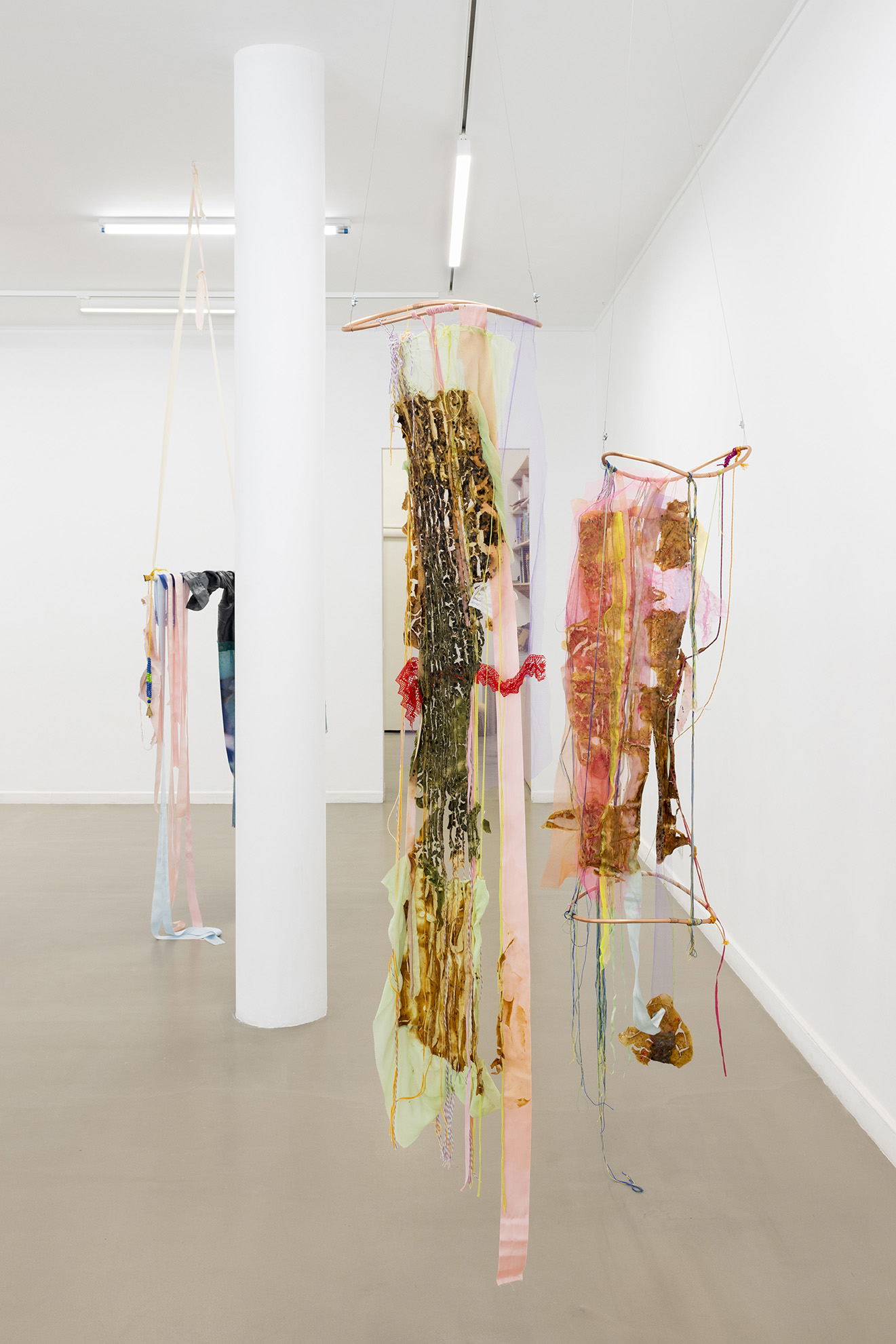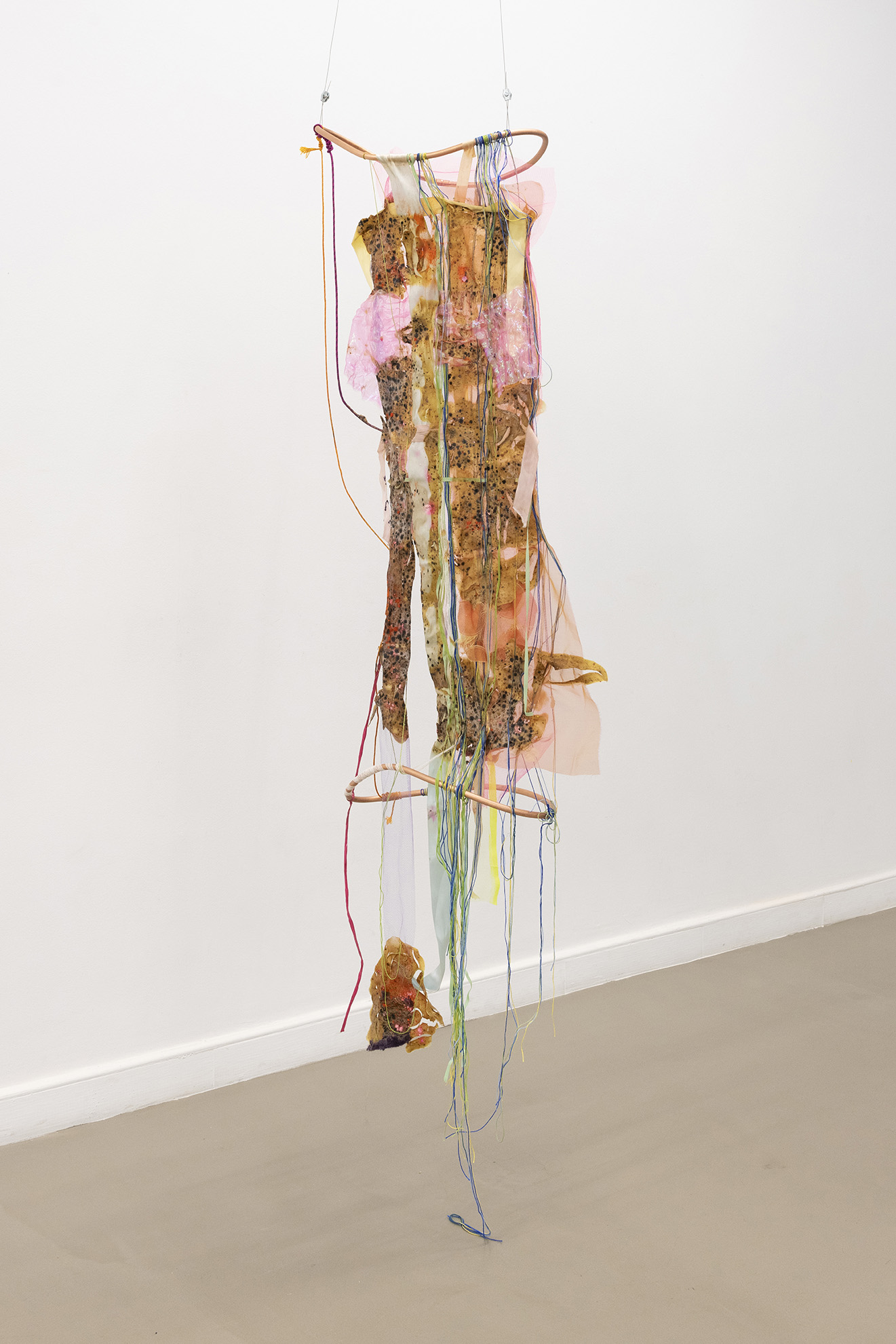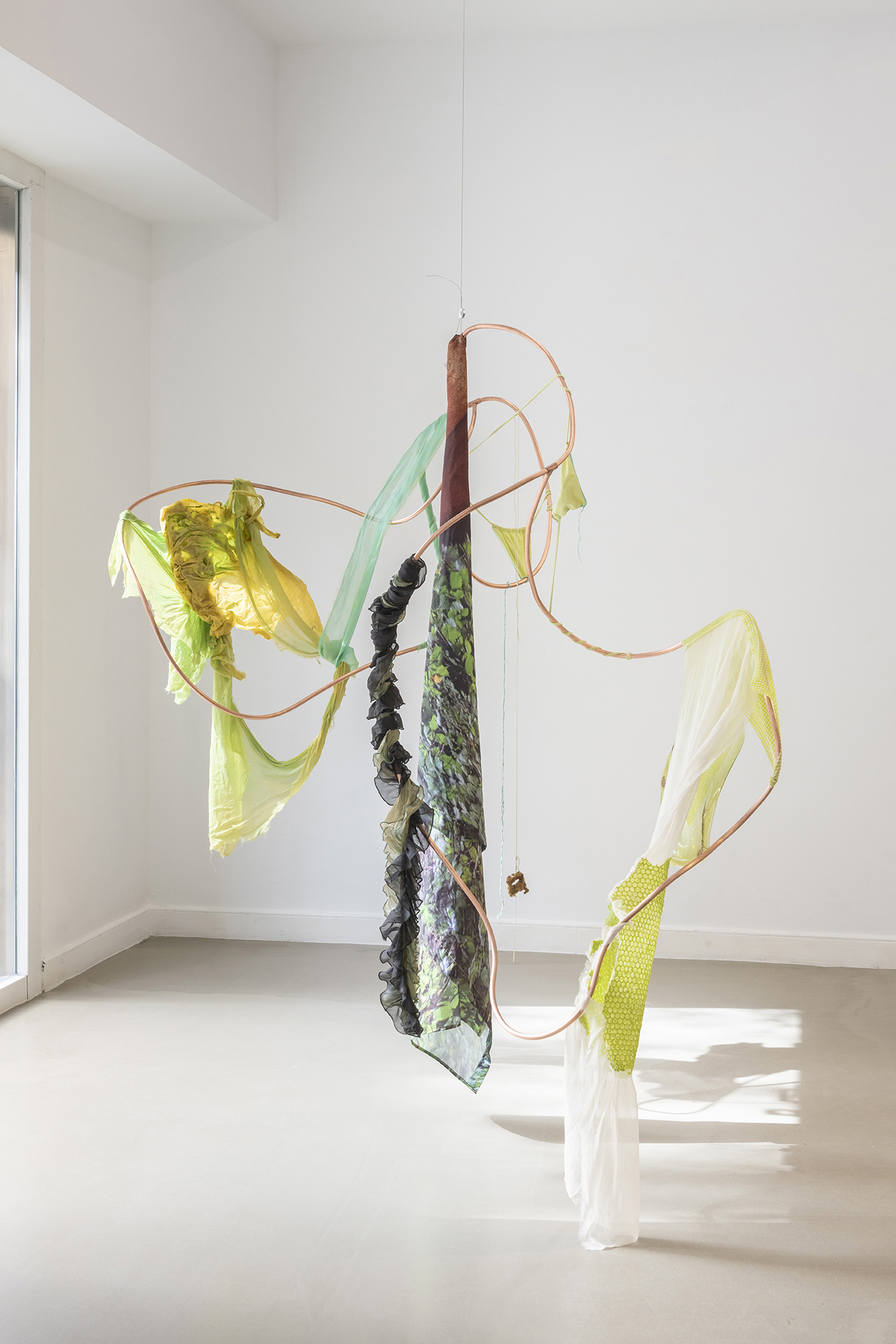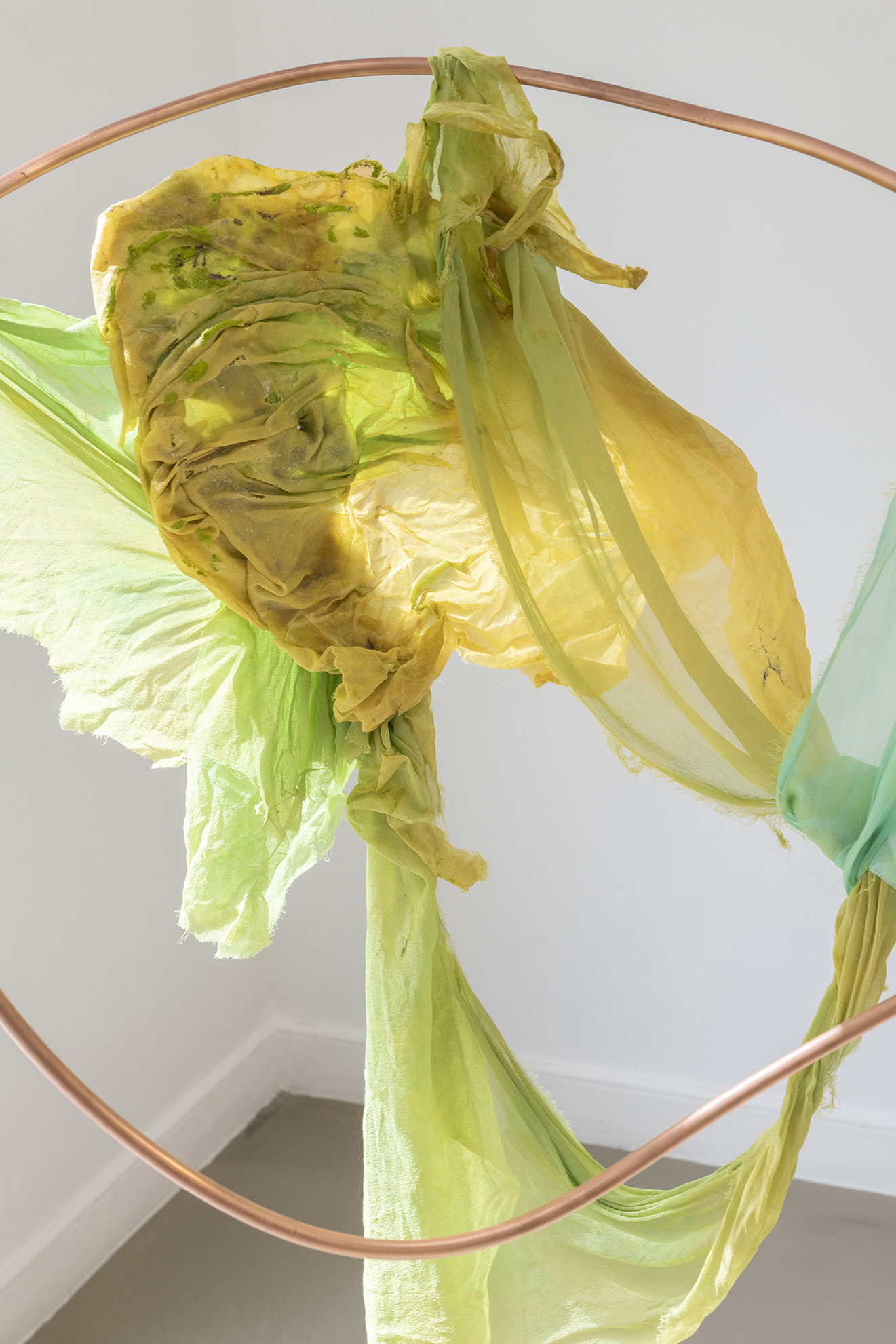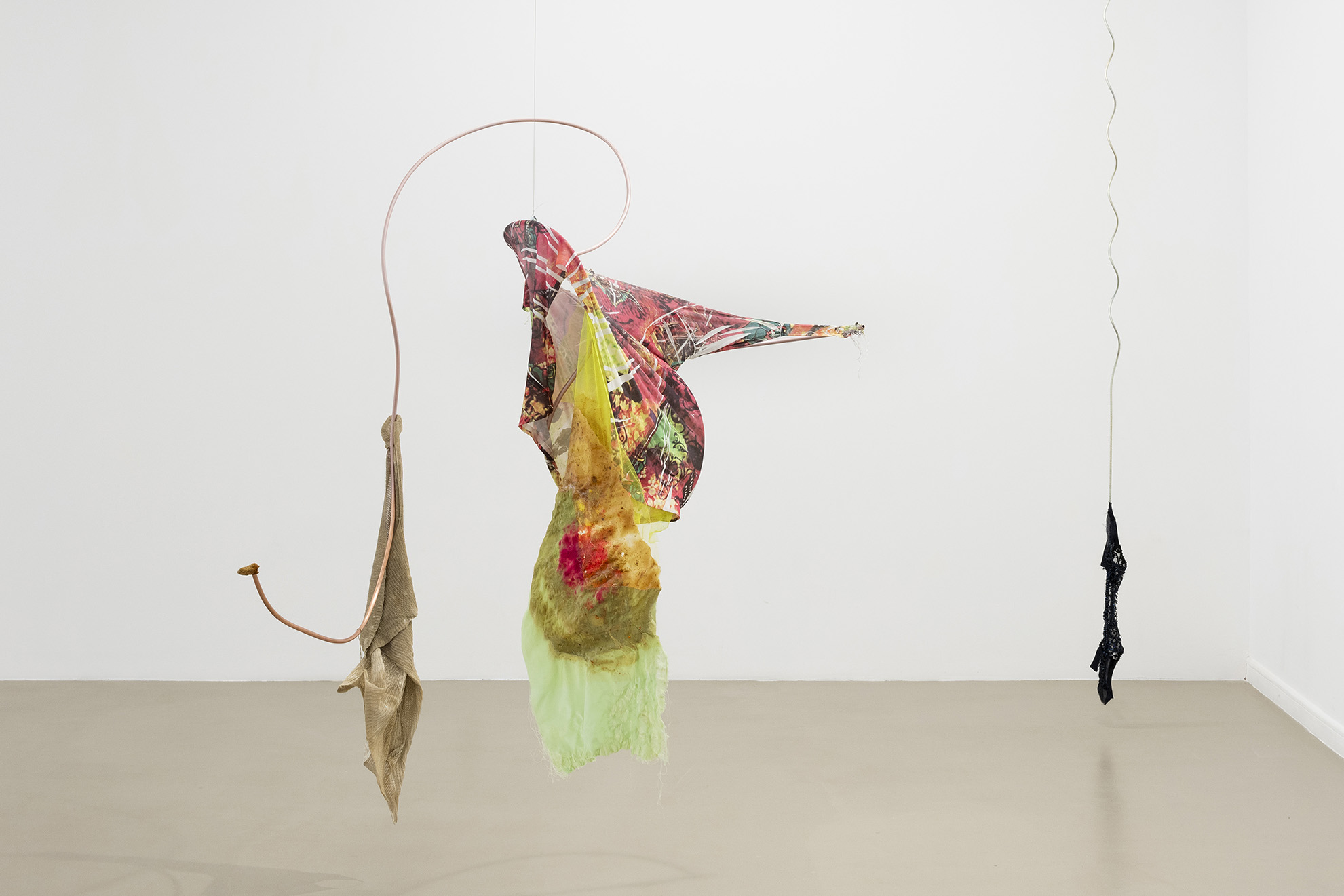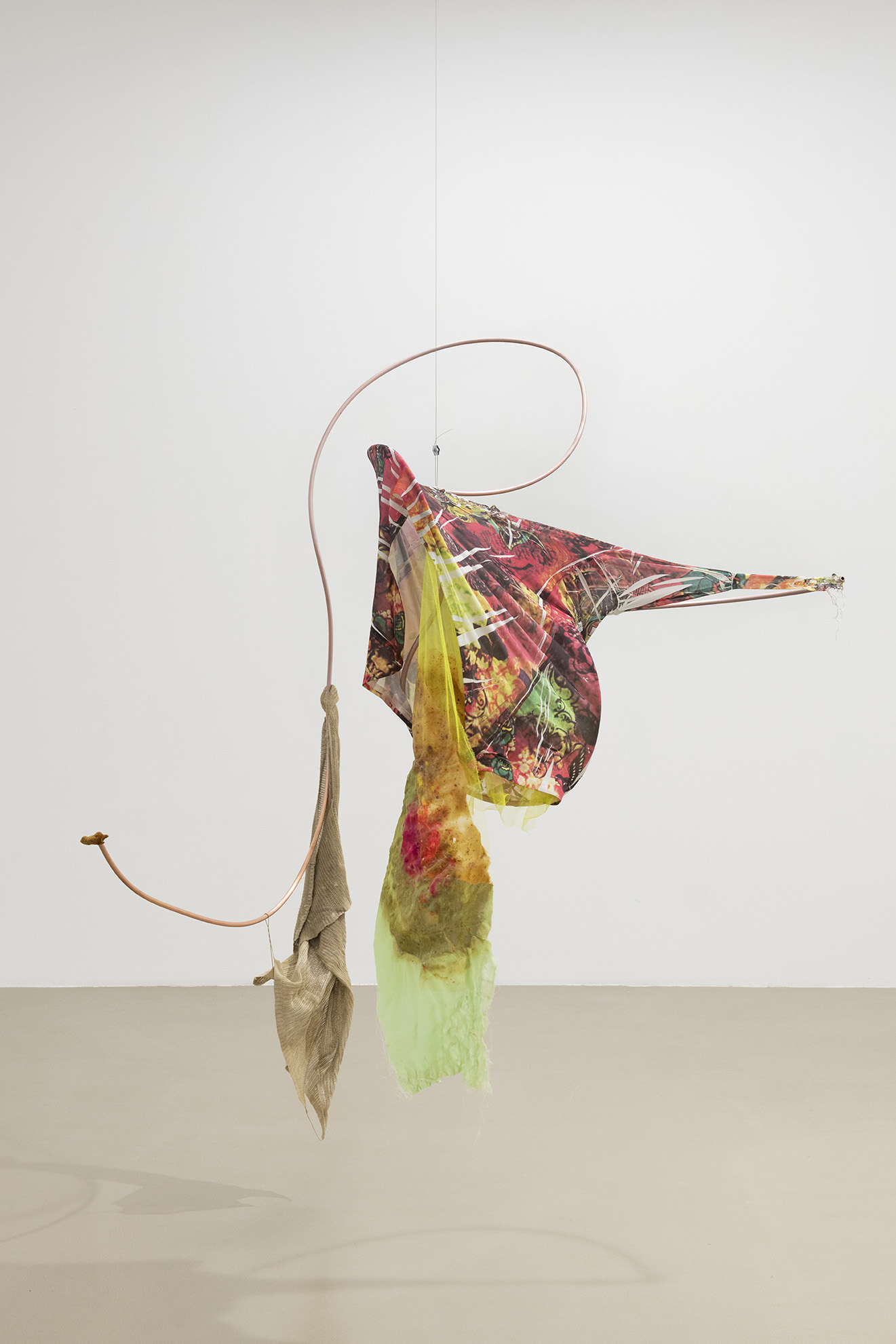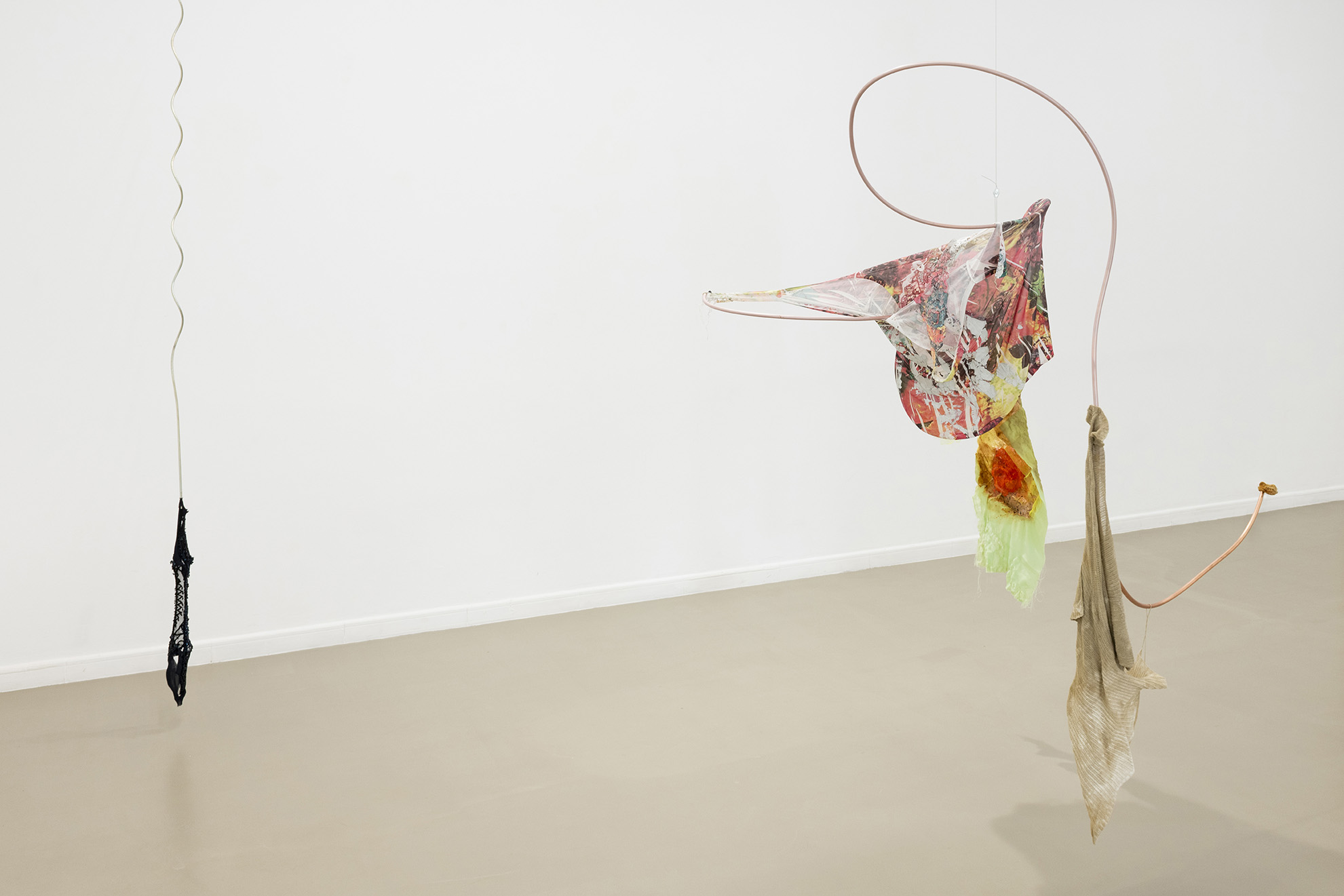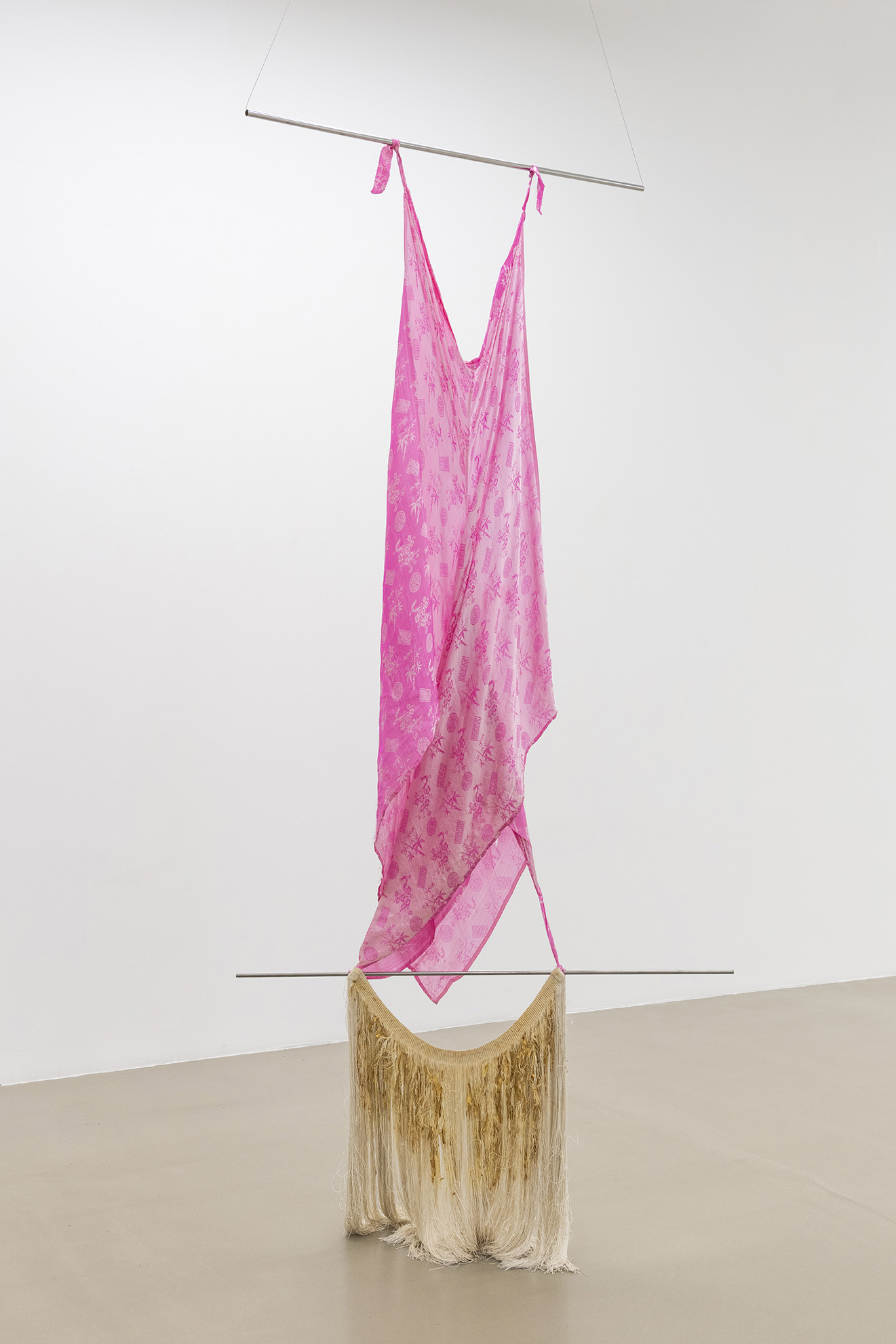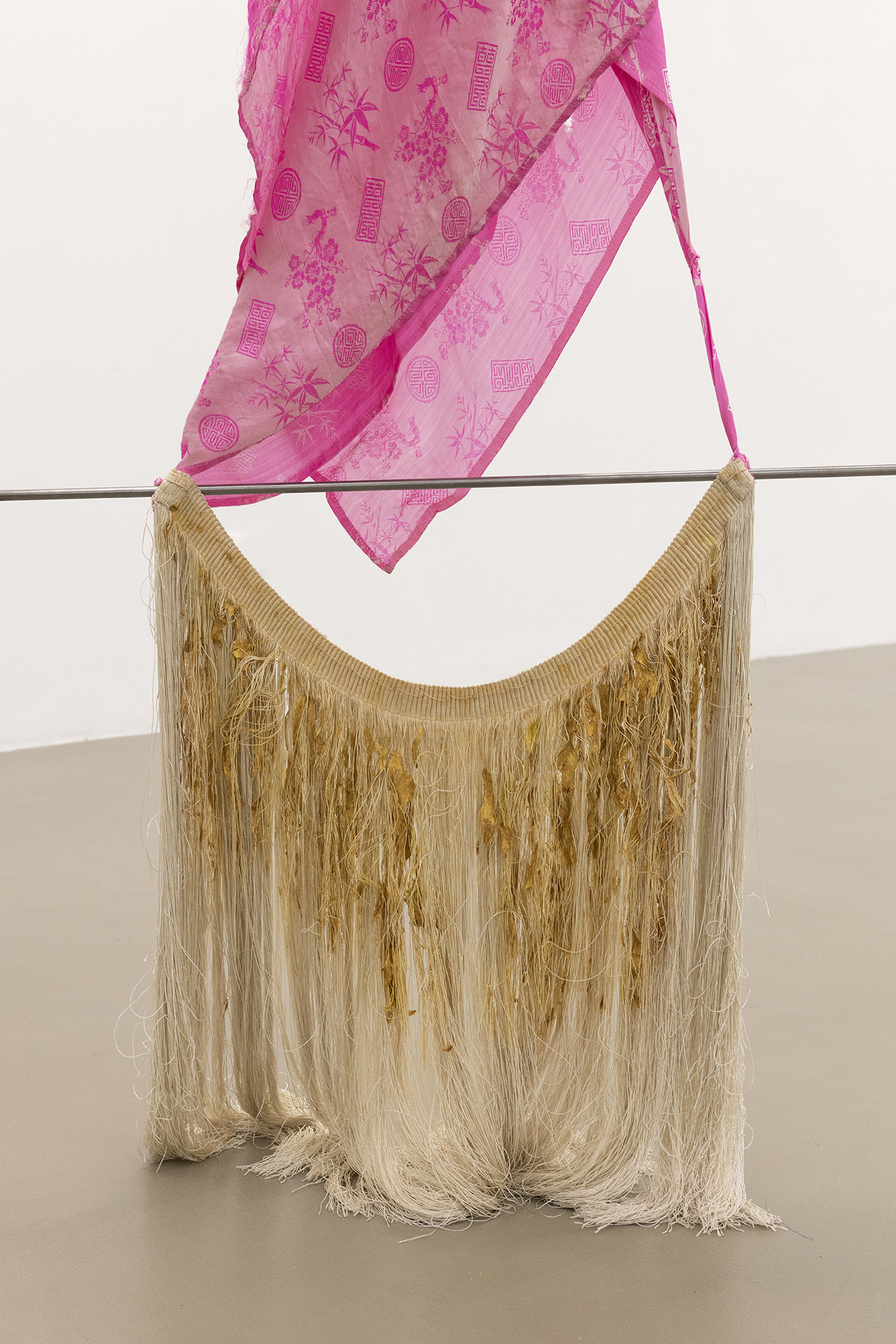20 March – 04 May 2024
Barcelona



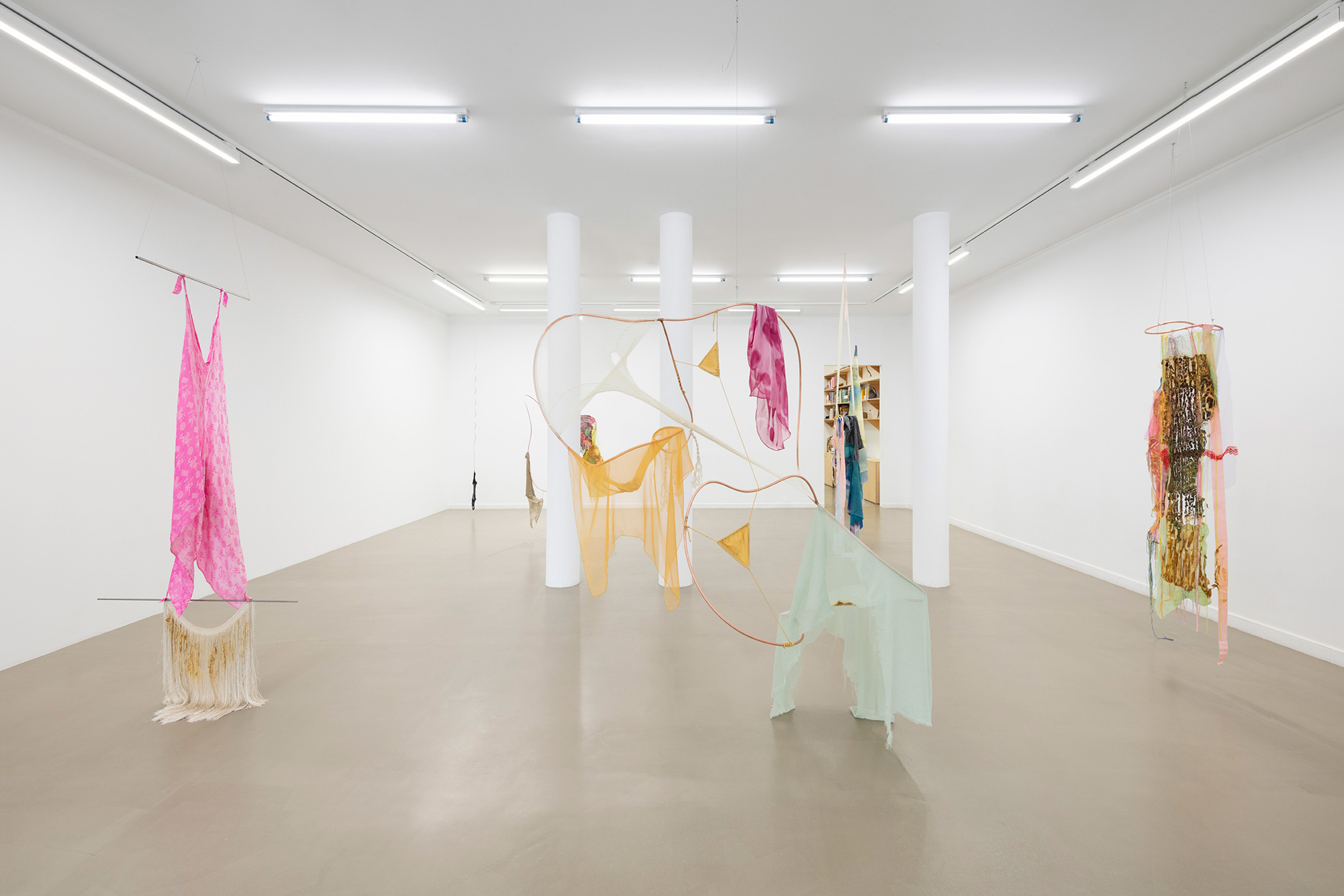


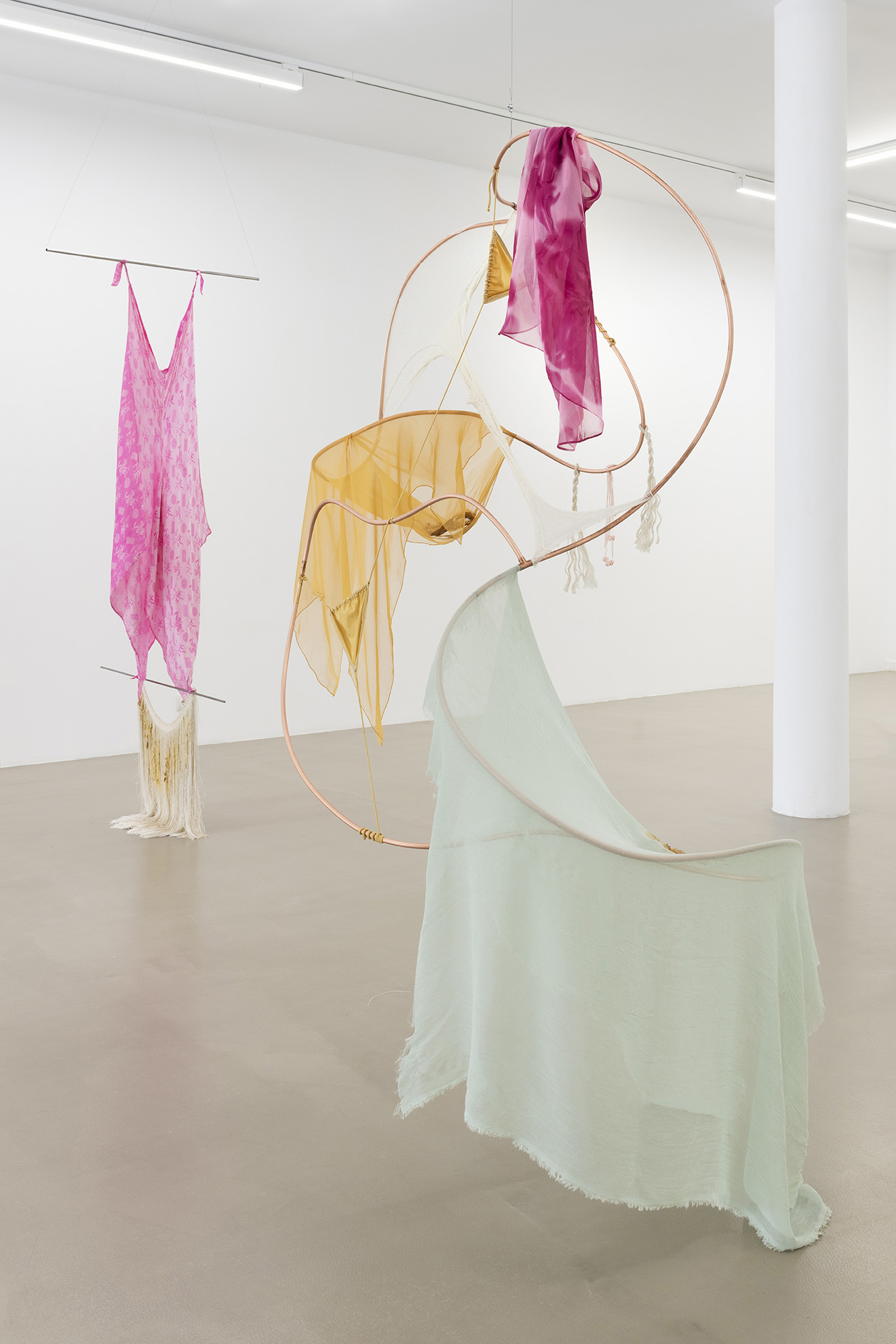
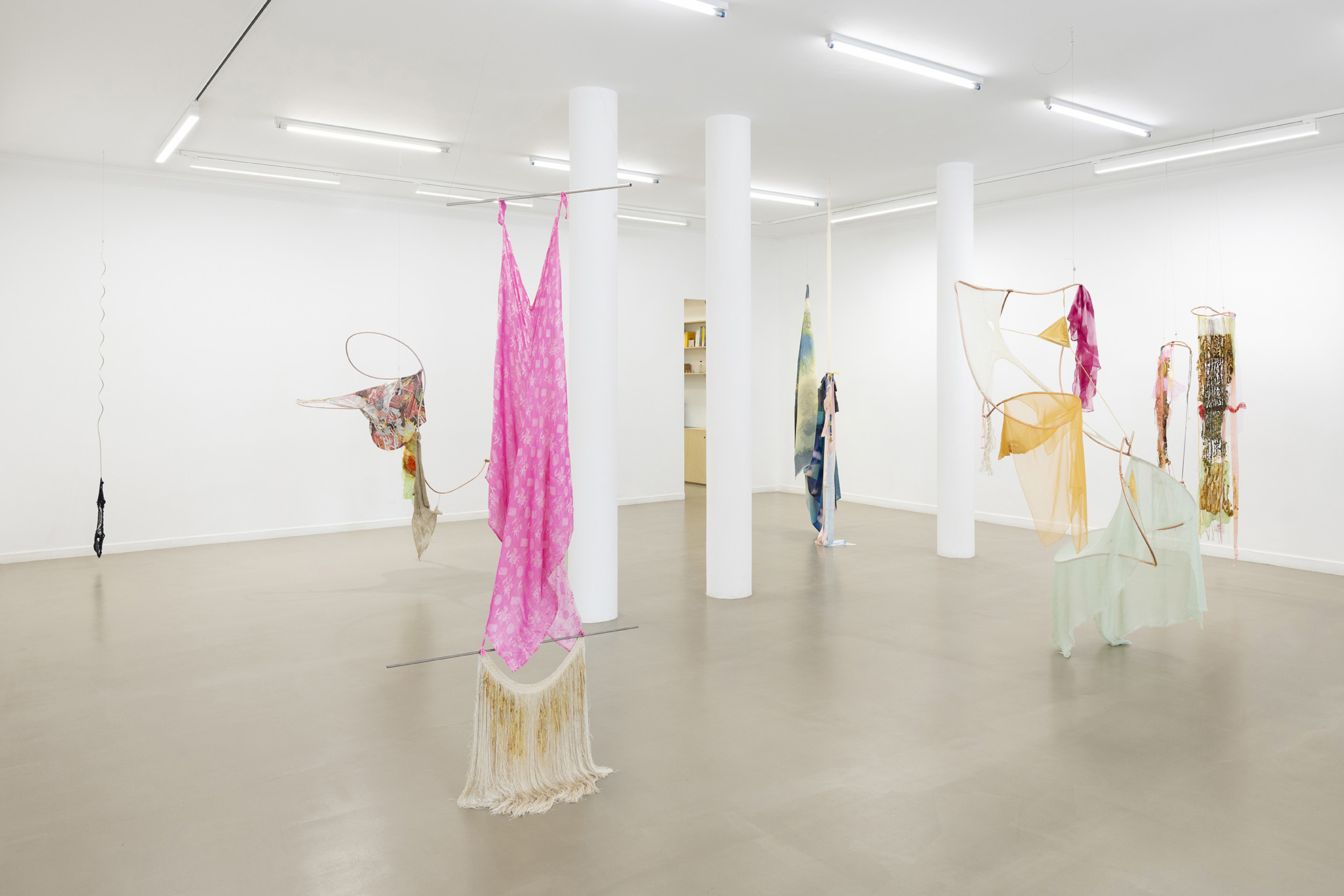
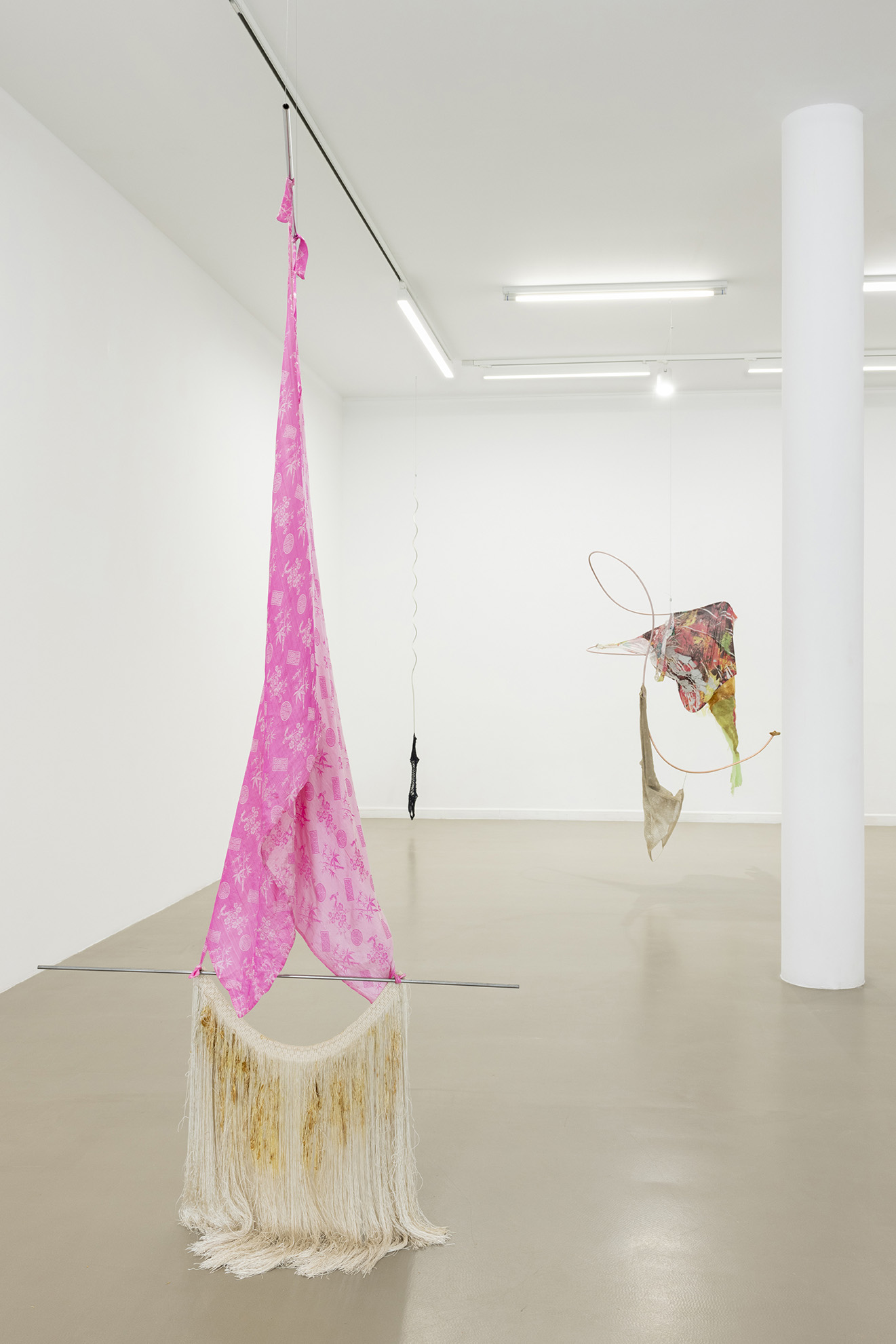
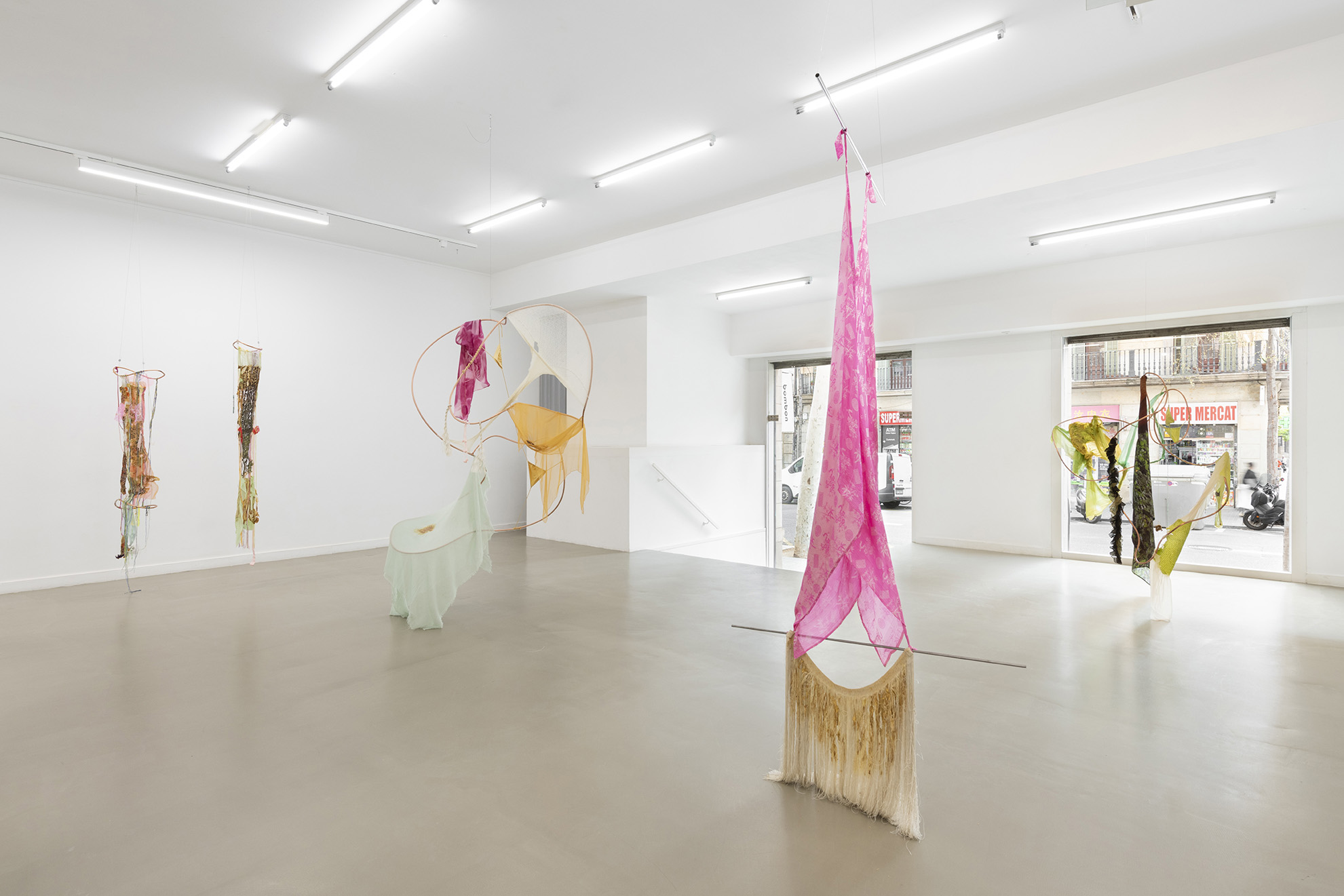
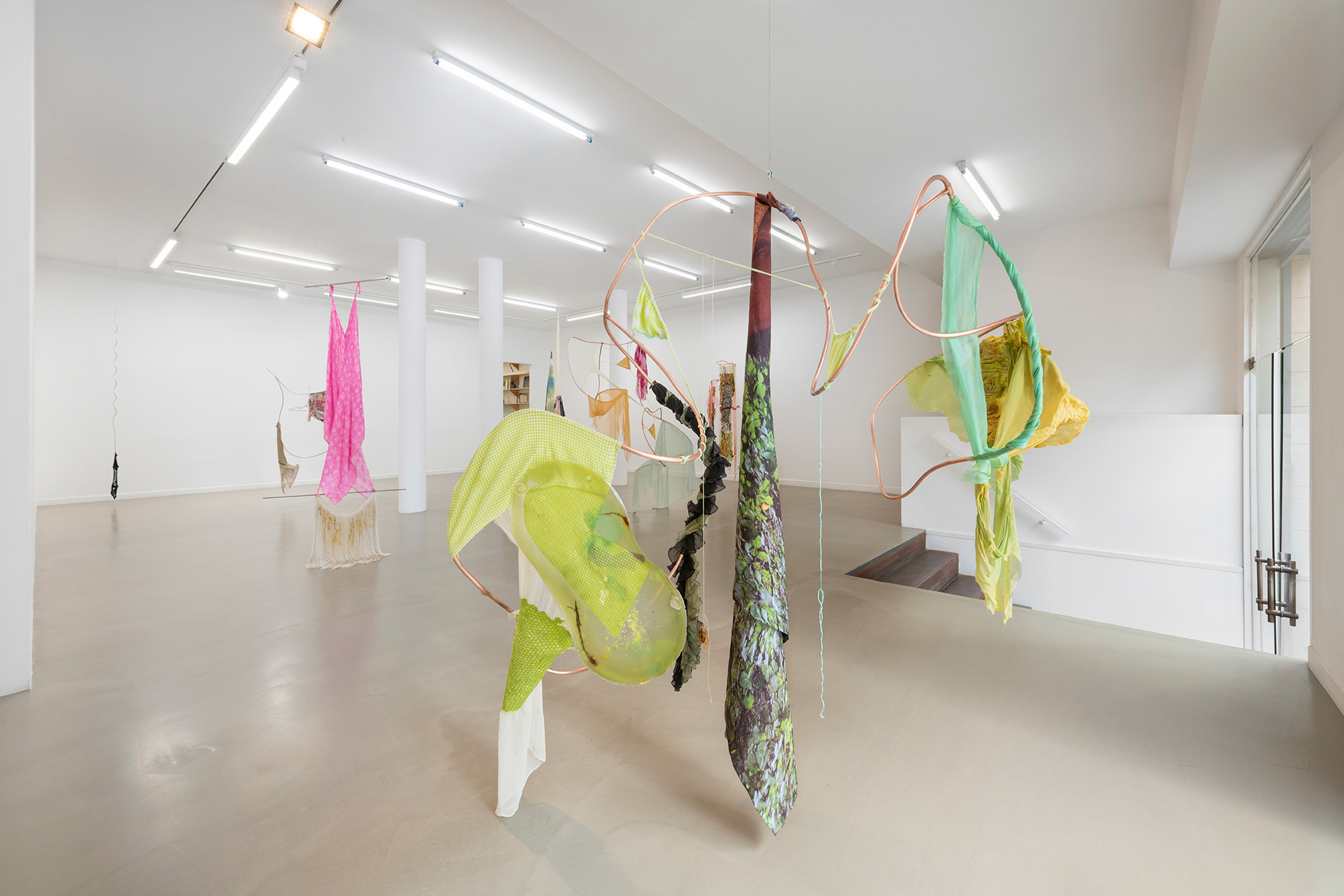
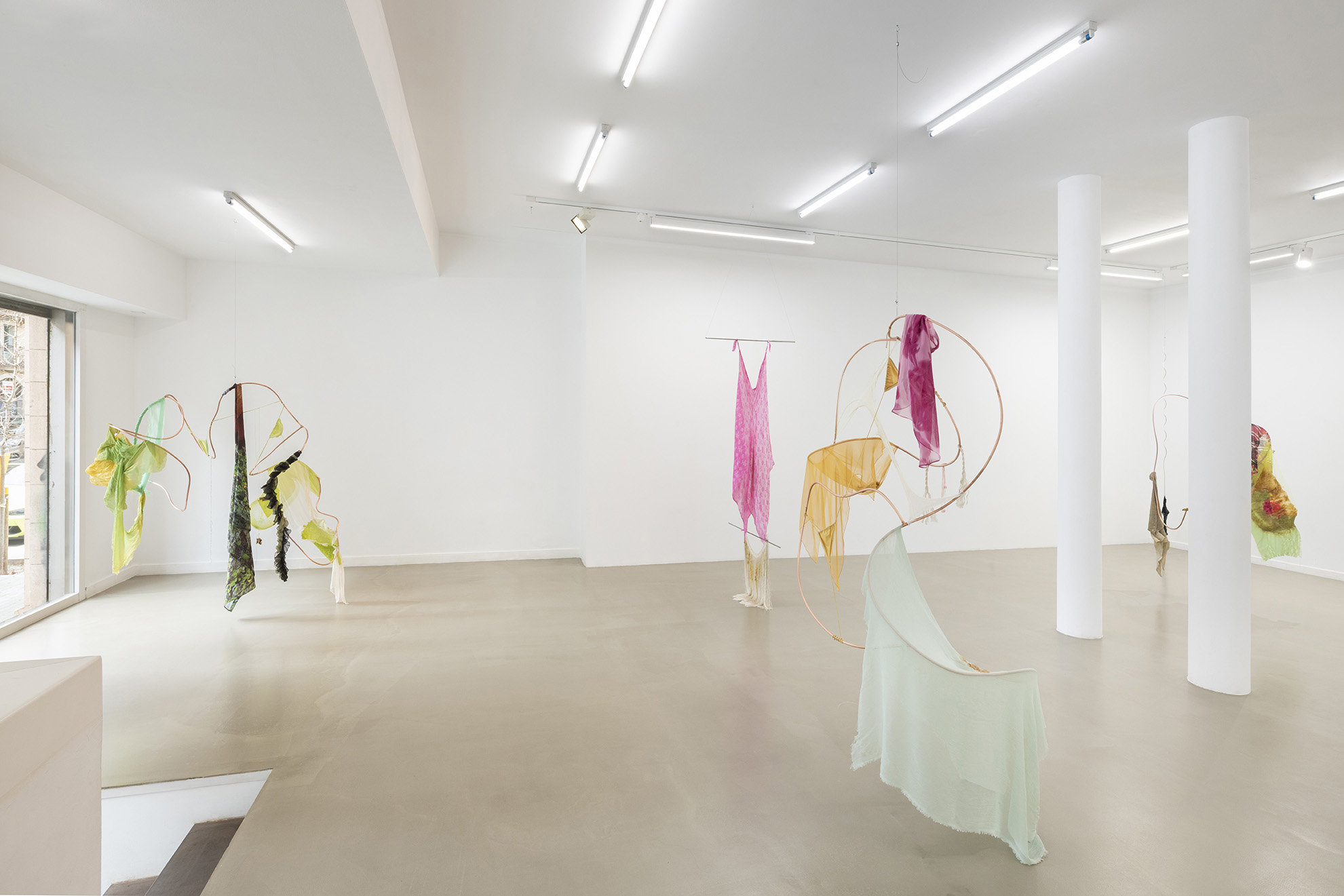
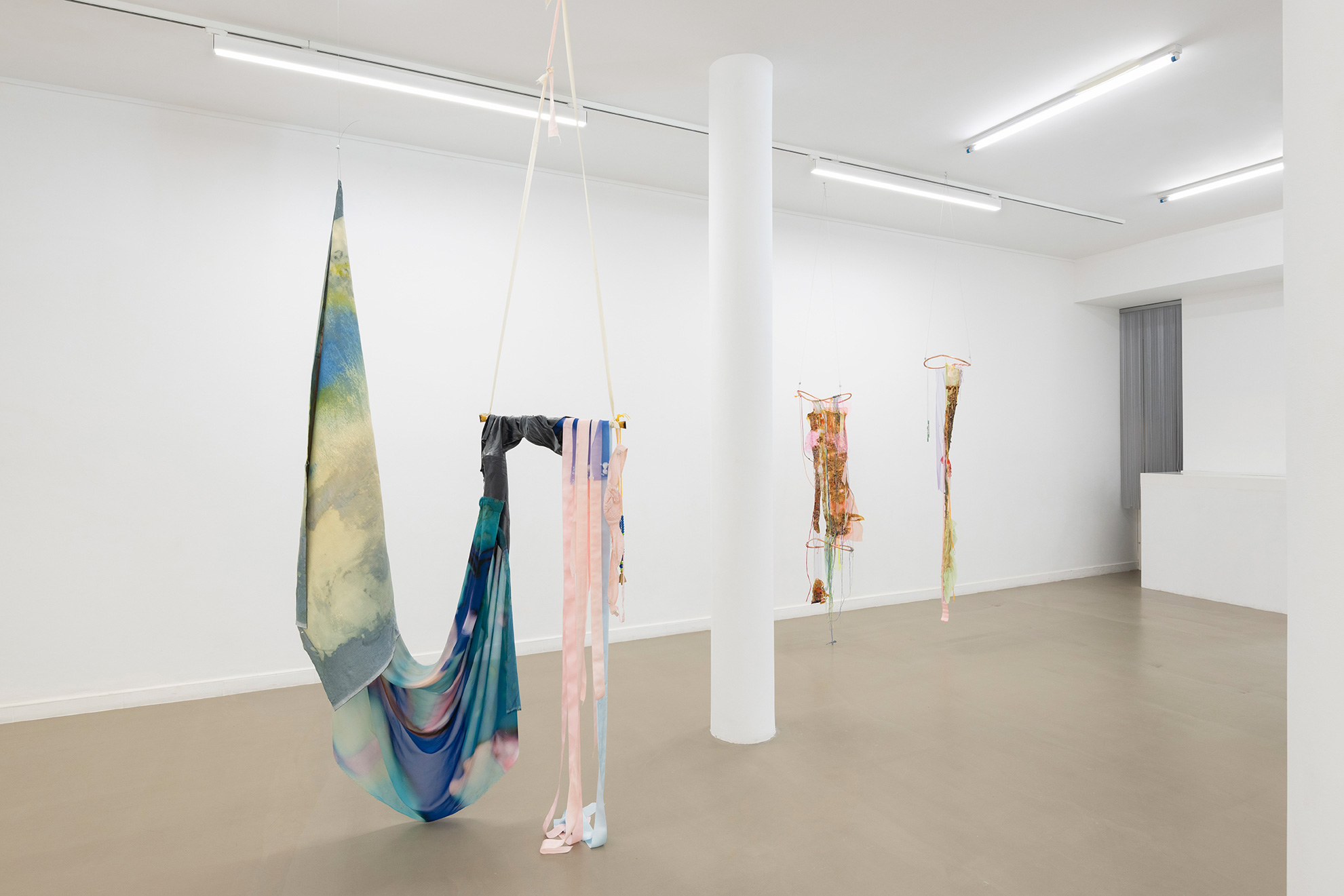
know more about
Exhibition text by Sofia Lemos
Mycelium is polyphony in bodily form.
The earth is full of refugees, human and not, without refuge.
Fungi exist imperceptibly in almost every place on Earth.
Extending beyond terrestrial environments from seabeds to sun-scorched deserts and within the human body, fungi are equally revered as guides to the depths of the unconscious mind and as silent stewards shaping our understanding of cognition in ways both profound and perplexing. Consider the intelligence of slime molds, their shape-shifting forms traversing spatial mazes with a deftness that defies conventional notions of reasoning.Picture the emergence of algae some 600 million years ago. It was the symbiotic relationship with fungi, known as mycorrhiza, that paved the way for the rise of seeds and plants, their mycelial threads serving as lifelines for the vegetal world.
Mycorrhizal fungi play a fundamental role in ecosystems, with almost 90% of all plants relying on them for sustenance. Their intricate mycelium, comprising a substantial portion of soil mass, acts as a vital anchor and refuge, averting soil erosion while expanding its moisture-holding capacities. Akin to a communal network that forms the so-called “wood wide web,” mycorrhizal fungi facilitate resource exchange among plants, ensuring their vitality and ecological resilience. This ubiquity underscores their indispensable role in shaping ecological dynamics and supporting biodiversity. Yet, in the vast expanse of the world, these mycorrhizal networks remain hidden from view, their quiet contributions shaping the very fabric of our existence. For many, it is within these unseen realms that solace and regeneration can be found in the wake of environmental upheaval.
Inspired by the interconnectedness of these planetary networks, Rosa Tharrats has created a new series of mobile sculptures, ever-changing and responsive to the subtle rhythms of their environment. They were conceived as refuges set on intentional paths for connection. Refuge, for Donna Haraway, is a place of regeneration for human and non-human species that are endangered by reductive, rationalist, and extractive global policies. In English, a refuge can be described as a haven, a shelter, a sanctuary. Each of these words points towards a facet of the word. For Haraway, a refuge can no longer be conceived uniquely from the point of view of hospitality, but as a space-time bracket that harbors the seeds of resilience and transformation.
In the embrace of refuge, ecosystems find the space to heal.
Lengths of silky rayon, cotton, and linen drape from bowed copper anchors individually set into the ceiling, evoking organic forms. They explore the concepts of motion, balance, and spatial relationships that have long captivated artists and art historians. From the draped, sewn, and tied hanging textile sculptures of Rosemary Mayer, to the kinetic and hand-woven linear installations of Gego and to the abstract metal wire sculptures of Ruth Asawa, these mobile sculptures anchor Tharrat’s perplexing interests in spirituality and fashion as well as materiality and movement, concerns that overlap in her practice.
Central to Tharrats’ practice is the integration of meditation and ritual, imbuing her artworks with a performative and transcendental quality. These mobile retreats serve as a basis for practicing samādhi, which means “to collect” or “bring together” in Pali and is generally regarded as a state of meditative consciousness. In different Indian religious traditions, the cultivation of samādhi through various meditation methods is essential for the attainment of spiritual liberation. In Buddhism, it relates to another term saraṇa, which translates as “taking refuge” in the fundamental impermanence of all phenomena and in the spiritual community that is on the path of transformation. In these sculptures, Tharrats’ insight into the interconnectedness between inward practice and community-making speaks openly to the space-time bracket Haraway refers to—where connection becomes visible and transformation becomes possible.
This is evidenced in Tharrats’ interdisciplinary approach, which explores the possibilities of materials on both a physical and subtle levels by bridging the realms of fashion and visual arts. Take, for instance, the copper, cotton, and other organic fibers that form the backbone of this new sculptural series. Crafted from layers of woven and printed cloth, and sometimes including elements like stones and sponges, each sculpture is meticulously stitched and woven together. Consider the role of the cotton plant in this endeavor, its growth supported by the mycorrhizal networks, its fibers eventually harvested and transformed into fabric. These fabrics incorporate homemade bioplastics and SCOBY—a symbiotic culture of bacteria and yeast used in the production of the widely beneficial kombucha drink—which Tharrats produces to highlight the potential of these materials in addressing our planet’s most pressing environmental challenges.
Artificial fibers, such as viscose and acetate are sourced from her extensive archive of upcycled textiles, calling for an effort to embrace sustainability and encourage ethical practices within the industry. Finally, the copper that holds these fabrics in place, with its high electrical conductivity, also holds a deeper significance, serving as a conduit for intuitive insight. In traditional Indian medicine, copper is said to amplify our connection to the natural world, grounding restless energy into self-acceptance and increasing the vitality needed to take action.
As part of REFUGIA’s public program, which will take place on selected weekends throughout the duration of the exhibition, Tharrats invites the public to activate the sculptures through breathing, laughter, and collective singing. Another performative ritual will activate AVOC IVIDRAM (2024) a large-scale garment that dresses the gallery façade inspired in the Tibetan Buddhist Thangka paintings on cotton and silk appliqué, usually depicting a deity, scene, or mandala. Traditionally kept unframed and rolled up when not on display, thangkas are mounted on a textile backing in the style of a scroll. In the gallery, the spirulina dyed fabrics—a blue-green algae believed to be one of the oldest life forms on Earth—are held by delicate copper tubes and revert not to a deity but to the artist’s belief in the inherent divinity of the sea and the forest. The process of care and collective unfolding of this scroll mirrors Tharrats’ exploration of interconnectedness and shared experience.
Whether sourcing and selecting these materials or inviting engagement with them, Tharrats invites us to reconsider our relationship with the world around us, to recognize the inherent value of every element as a constant reminder of the continuous flux inherent in life’s cycles. In her sculptures, we experience not only the sensorial and spiritual interplay among materials and forms but also the pulse of life, beckoning vitality to thrive and flourish, much like the seemingly invisible mycorrhizal networks that sustain life beneath the soil.
*Thank you to Carolina Herrera for collaborating with the fabrics of this exhibition
Read More


